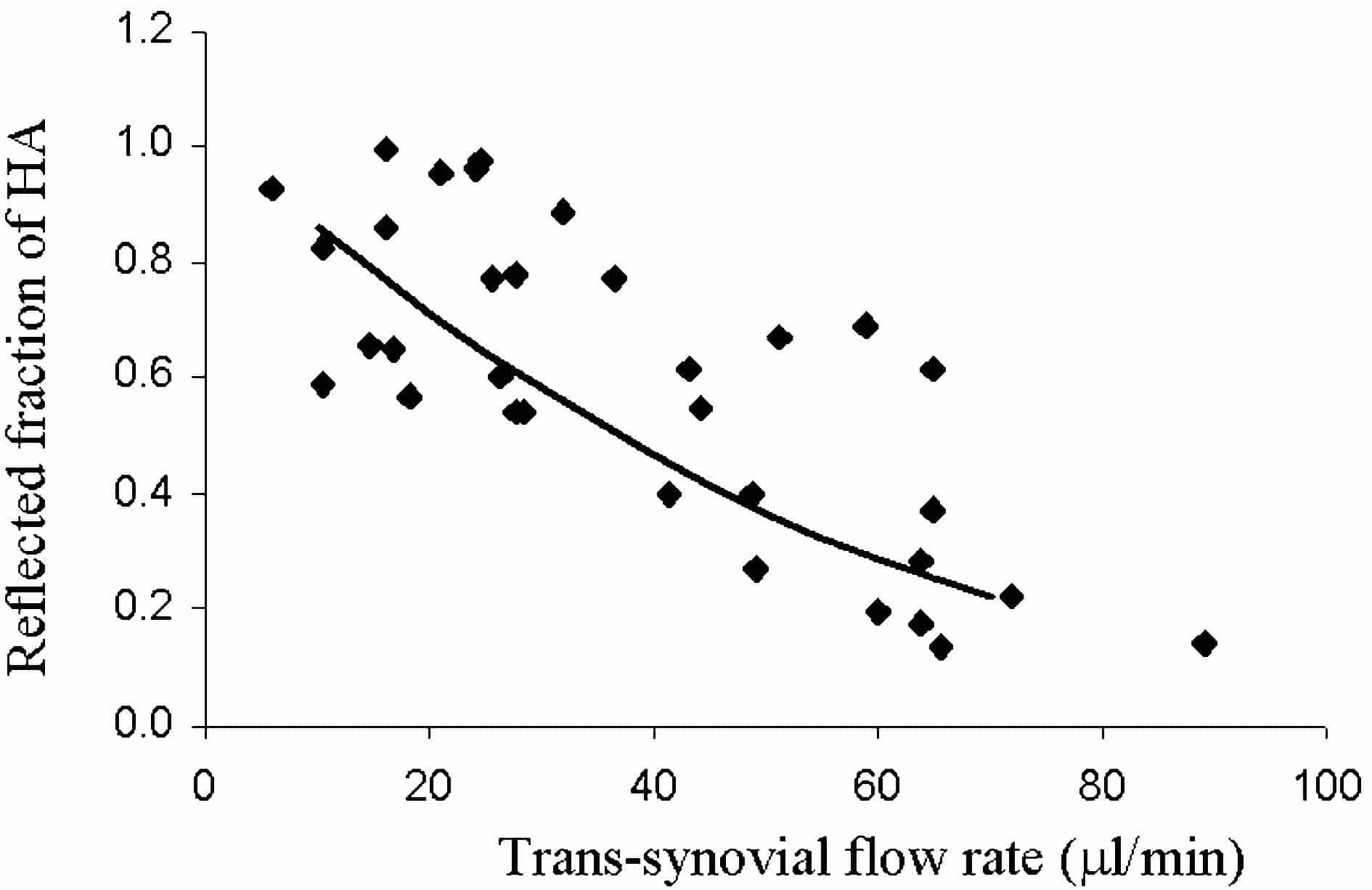Hyaluronan (HA) in synovial joints is partially reflected by the joint lining and has been reported to assist in the conservation of intra-articular fluid during joint flexion by the creation of a concentration polarization layer which buffers fluid loss (McDonald & Levick, 1995). To examine this hypothesis, a series of experiments has been carried out on joint cavities of rabbit knee using a mixture of HA and fluorescein dextran (FD), which acted as a reference solute (e.g. Sabaratnam et al. 2003). Data from these experiments were in agreement with the hypothesis. It was also noted that the reflected fraction of HA by synovial lining decreased at higher trans-synovial flow rate. The authors applied concentration polarization theory to explain the phenomenon in a simplified ultrafiltration model (Coleman et al. 1999). However, the steady state assumption used in their analysis restricted its applicability to account for the observed flow dependence of HA reflection in synovial joint cavities. In the current study, we developed a theoretical model considering the unsteady nature of HA filtration in animal experiments, to study the build-up of HA concentration polarization layer near the synovial lining, and to elucidate the mechanism for flow dependence of HA reflection in joint cavities.
Using a one dimensional dead-end filtration model, we derived a differential-integral equation from mass conservation that accommodated unsteady solute filtration near a partially permeable membrane. With model parameters taking values derived from experiments, we solved the equation numerically. Results from the model gave insight into the build up of the HA concentration polarization layer with the time. They revealed how parameters, such as the filtration rate, diffusivity of HA and the reflection coefficient of the synovial lining to HA, affected HA ultrafiltration.
To explain the observed flow dependence of HA reflection in joint cavities, we extracted data from the model at the same time as in experiments. Good agreement between experimental data and model prediction was observed (Fig. 1). In addition, we were able to calculate the time for the system to reach steady state and the thickness of the polarization layer at a given filtration rate. We found that at low trans-synovial filtration rates, the estimated time for the system to reach steady state exceeded experimental time and the thickness of the polarization layer extended >2 mm.
In conclusion, results from the model confirmed the concentration polarization layer near the joint lining. Flow dependence of HA reflection could be caused by unsteady HA ultrafiltration in joint cavities before the system reaches steady state.

